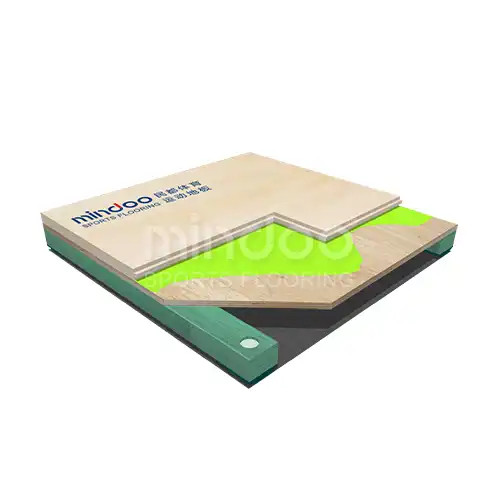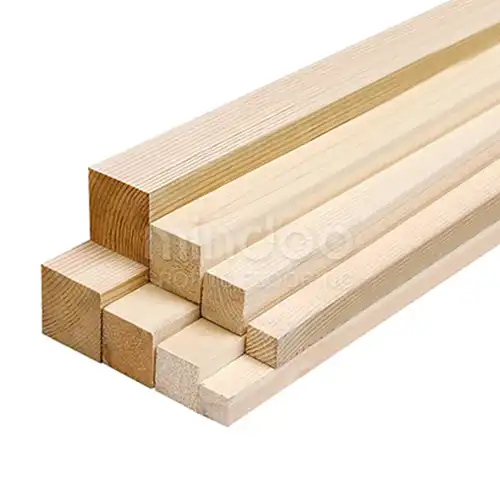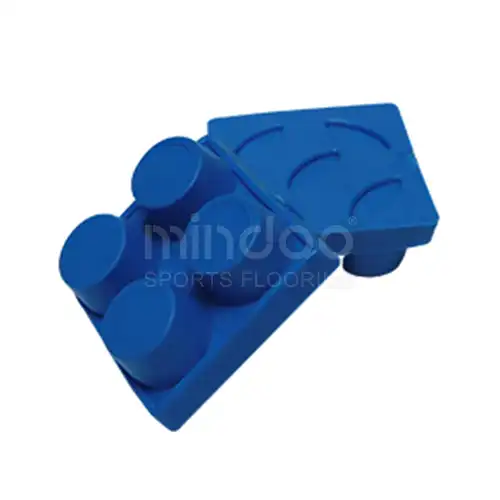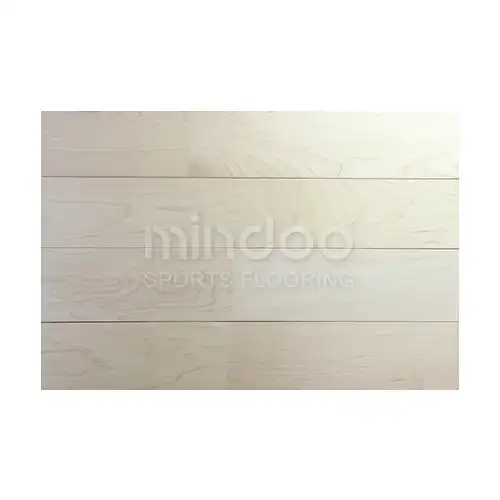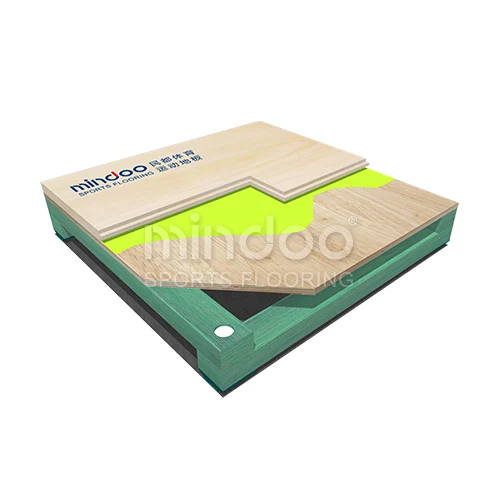Post-Olympic Venue Legacy: Sustainable Solutions for Recycling and Reusing Sports Hardwood Flooring to Promote Green Sports Infrastructure
After the excitement and global spotlight of the Olympic Games fade away, one of the most pressing challenges for host cities is ensuring that the legacy of their world-class sports venues benefits the community long-term. Beyond just the buildings and the infrastructure, a crucial element that often goes overlooked is the flooring—specifically, sports hardwood floors. These floors, integral to high-performance environments, have a significant impact on both the environment and the long-term usability of the venue.

1. The Challenge of Post-Event Venue Utilization
After a major sporting event like the Olympics, many venues are left underutilized or even abandoned. While the physical structure may be repurposed for other uses, such as concerts, conventions, or community events, the specialized sports infrastructure, like hardwood flooring, often goes to waste or requires costly removal. This is particularly true in venues built specifically for the Olympics, where the investment in specialized flooring may not align with the post-event usage needs.
One solution to this problem is to incorporate the recycling and repurposing of sports hardwood flooring as part of the venue's decommissioning plan. Instead of discarding or unnecessarily replacing flooring, a more sustainable approach can be taken to either reuse or recycle the materials, saving money and minimizing environmental impact.
2. Recycling and Reusing Sports Hardwood Flooring
High-quality sports hardwood flooring, like the kind typically used in Olympic venues, is durable and can last for decades if properly maintained. After the Games, this high-grade flooring offers a unique opportunity for recycling and repurposing, benefiting both the environment and the community.
Step 1: Removal and Preservation of Flooring
The first step in the recycling process involves carefully removing the flooring to preserve its integrity. High-quality hardwood floors are designed to withstand intense use, meaning they can be repurposed for a variety of other applications. Proper removal ensures the flooring can be reused in other venues or for different purposes, such as community centers, school gyms, or even professional sports facilities.
Step 2: Refurbishing and Reusing in New Venues
Rather than replacing old flooring with new, the salvaged hardwood can be refurbished and repurposed for future venues. This not only saves the cost of installing new flooring but also reduces the environmental impact associated with manufacturing and transporting new materials. In many cases, the wood can be sanded down, refinished, and reinstalled in new venues, offering the same level of performance and durability.
For example, if an Olympic basketball court uses solid maple flooring, after removal and refurbishment, it can be reinstalled in a high school or college gymnasium, providing years of continued use. This process of refurbishment extends the lifecycle of the flooring and ensures that valuable materials aren’t discarded unnecessarily.

Step 3: Upcycling Materials for Alternative Uses
In some cases, if the flooring has sustained damage during the Olympics, it may not be viable for direct reuse in sports venues. However, the materials can still be upcycled into furniture, décor, or even artisanal products like cutting boards or custom flooring for smaller venues. Upcycling helps avoid landfill waste and provides additional value by giving old materials a second life.
3. The Environmental Benefits of Recycled Sports Flooring
The environmental advantages of recycling and reusing sports hardwood flooring are significant and contribute directly to the global push for greener, more sustainable infrastructure. Here’s how:
Reduction in Waste and Carbon Footprint
Recycling and reusing hardwood flooring reduces the amount of waste sent to landfills. Instead of tearing up floors and sending them to waste disposal, venues can avoid this environmental burden. Additionally, by repurposing the wood, venues can save the carbon emissions associated with producing and transporting new flooring.
Conservation of Natural Resources
High-quality hardwood floors are made from valuable timber, often from slow-growing tree species. By reusing the flooring, venues help conserve natural resources and promote responsible forest management. This aligns with the growing demand for sustainable construction materials and reduces the pressure on global wood resources.
Energy Efficiency in Renovation
The process of removing, refurbishing, and reinstalling hardwood flooring generally requires less energy than the production and installation of new flooring. With fewer materials needing to be sourced, processed, and transported, the overall energy consumption associated with flooring installations is significantly reduced.
4. Promoting Green Sports Infrastructure through Flooring Solutions
Beyond the immediate environmental benefits of recycling, incorporating sustainable flooring solutions into venue construction and renovation is also part of a broader trend toward green sports infrastructure.
Sustainability as a Selling Point for Venues
As sports venues are increasingly built or renovated with environmental sustainability in mind, the use of recycled sports hardwood flooring can act as a powerful selling point for venues. Being able to market a venue as “green” or “sustainable” can attract a range of stakeholders—from environmentally conscious sponsors and partners to eco-friendly fans and athletes. As the sports industry embraces sustainability, venues that prioritize eco-friendly practices, like recycling and reusing hardwood floors, are likely to stand out.
Incentivizing the Use of Recycled Materials
Governments and organizations can play an essential role in driving the adoption of recycled flooring solutions by providing incentives for venues that prioritize sustainability. Tax breaks, grants, and recognition for using recycled materials can motivate more sports venues to adopt green practices. By encouraging the use of sustainable flooring in sports facilities, governments can ensure that Olympic venues and other large-scale sports facilities continue to benefit local communities for years to come.
5. Case Study: Olympic Venues and Green Legacy Initiatives
Several cities that have hosted the Olympics have already initiated plans to repurpose or recycle materials from their venues, including flooring. A notable example comes from the London 2012 Olympic Games, where efforts were made to reuse and repurpose materials from various parts of the venue. For instance, the wood from the Olympic basketball courts was salvaged, refurbished, and later installed in community centers across the UK, contributing to a sustainable post-Olympic legacy.
Similarly, the Tokyo 2020 Olympics introduced sustainability as a central theme, with various initiatives aimed at reducing waste and reusing materials from venues. The emphasis on eco-friendly practices in the planning stages ensures that the post-event phase continues to reflect those principles, with flooring recycling and reuse being part of the strategy.

The recycling and reuse of sports hardwood flooring after major events like the Olympics not only provides significant environmental benefits but also supports the broader shift toward green infrastructure in the sports industry. By repurposing these materials, venues can reduce waste, save on costs, and promote sustainable practices that can serve as a model for future projects.
As the world moves toward more sustainable development, adopting practices such as recycling sports hardwood flooring will help ensure that sports facilities leave a lasting, positive legacy for both the environment and future generations. By embracing these green solutions, we can create sports venues that are as environmentally responsible as they are high-performance.
